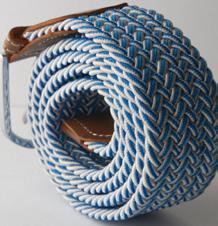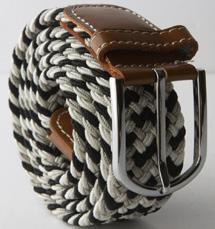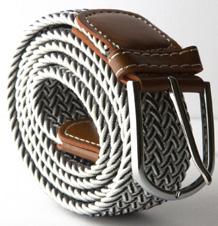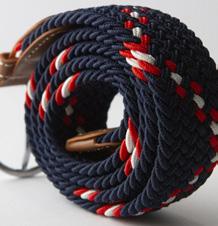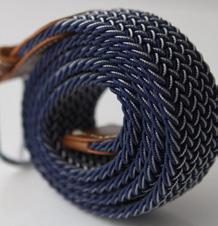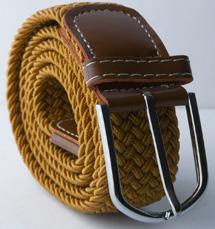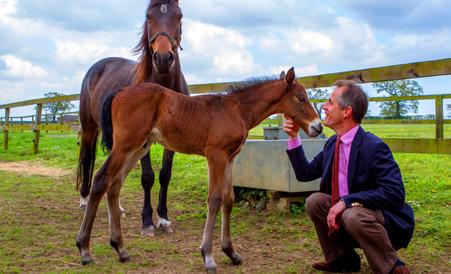
8 minute read
Around The Traps
ON MY TACKBOX
Horses in sport: getting it right
ROLY OWERS is Chief Executive of World Horse Welfare, an international charity based in the UK. The charity’s mission is to work with horses, horse owners, communities, organisations and governments to improve welfare standards and stamp out suffering.
When we hear the term ‘animal welfare’ it is so often considered to relate only to neglect and deliberate cruelty, but animal welfare certainly has much wider implications than that. At World Horse Welfare we work to improve the partnership between people and horses across the full spectrum of the horse world, and the use of horses in leisure or sport is no exception.
Research is continuing and, as our understanding of the needs of horses increases, we all need to take these on board and adapt our management techniques accordingly even if that means challenging the status quo. Just because we have managed horses in a certain way for decades doesn’t necessarily make it right for today.
We have been working with sport regulators amid the increasing need for horse sport to maintain its ‘social licence’ or, to put it more plainly, the trust of the public. A social license to operate refers to the perception that an industry operates in a socially acceptable or legitimate way. To do this within the horse sport industry, it must do right by its horses – and to be seen to be doing this - by always putting the health and welfare of the horse first.
Don’t get me wrong, there is a lot of good welfare practice in horse sport, but there is also always plenty of room for improvement and it is incumbent on everyone - whether in competition or leisure riding - to challenge whether they are truly giving horses what they need to have a good quality of life.
How can we do this? It’s certainly not about buying gold-plated feed bowls! A good place to start is what is known as the ‘five domains’ of animal welfare, which set out what we need to consider in order to reduce negative experiences and provide positive experiences for our horses. The first four of these are basic needs: nutrition, environment, physical health, and behaviour (especially its ability to express this). The fifth domain is a positive mental state, meaning that our horses can actually enjoy their lives and are protected as much as possible from negative experiences.
While we may all understand the importance of appropriate feeding and nutrition (not too much or too little, lots of forage), the need for a horse to have a suitable environment in which to move or rest, protection from and treatment of illness, injury or disease and the freedom to express its normal behaviour (such as its need to roam and be in the company of its own kind), ensuring that our horses have the opportunity to enjoy positive experiences - and are shielded from negative ones - may not be an obvious consideration for some owners and keepers. This is where responsible horse owners and all those who involve horses in sport should really challenge themselves.
So what, practically, should we do to improve things? Horses all evolved to roam in herds, forage for most of the day, maintain social bonds and run from threats. The more our horse management provides these conditions, the more fulfilled our horses will be. Some have further reduced the concept of the five domains, and called it ‘the three F’s: freedom, forage and friends’. While this might sound simple, I hope that everyone will question whether our horses’ needs here are truly being met, especially in the sport world. There are definitely moves in the right direction, with racehorses and Grand Prix dressage horses being allowed time
out in fields with friends, but there are still too many sports horses that only come out for their exercise sessions.
Another way to be vigilant in doing right by your horses is to keep abreast of the latest research through the media – magazines such as this one, for instance - or your vet. Our knowledge of horse welfare is growing all the time and we understand more about good welfare than we did, even 10 years ago. For instance, research over the past few years shows that individual stabling is not a healthy living environment for horses, leading to behavioural indicators of poor welfare: stereotypies such as weaving, crib-biting and wind-sucking, and box-walking; aggressiveness toward humans; unresponsiveness to the environment; and stress-related behaviours. It is estimated that up to 90 per cent of sport horses are individually stabled although this figure does vary across different sports. We should all consider whether this is really fulfilling the needs of our horses.
Then there is recognising – as well as responding to – the individuality of our horses. Most of us know that each horse is an individual, with their own preferences, idiosyncrasies and physical features. Many of us have experienced that our horses prefer the company of certain individuals and may not get on with others. Some horses would be happiest turned out permanently, some prefer to come into the comfort of a stable at night, others prefer to escape the sun and biting flies during the day but like being able to graze and socialise at night.
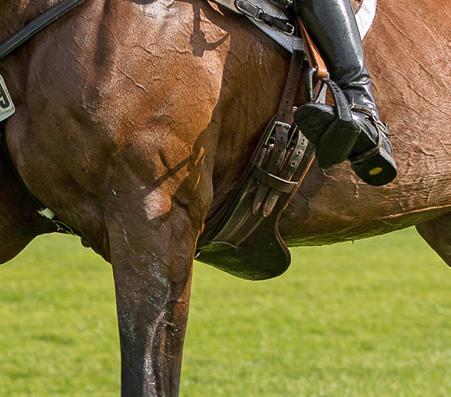
How many of us truly understand the implications of this? For instance, we all know that horses should wear a saddle that has been properly fitted for them to prevent pain and even lameness, but do we check this as often as we should as our horses change shape? Bridle fit is also vitally important, as discussed at our annual conference last year where Dr Rebecca Murray highlighted the different pressure points in bridles and how they can be affected by the size, shape and asymmetry of a horse’s head.
There is much more to question, more to learn and much more all of us can do to improve the lives of our horses. Horse sport should be setting an example for others to follow and not simply playing catch-up, and they have an opportunity to exceed the expectations of the public. Because public opinion does matter, and welfare is their biggest concern. In the UK, the recently established Horse Welfare Board has developed a new welfare strategy covering the whole lifetime of racehorses, before, during and after they leave the sport. As Annamarie Phelps, British Horseracing Authority chair, said at our conference, “We must focus on what we do to maximise the benefits to horses and what we do to minimise the risks.”
Whether in competition or leisure riding, there’s always room to improve horse welfare (Image courtesy of World Horse Welfare). LEFT: Roly Owers, Chief Executive of World Horse Welfare, is committed to ensuring horses enjoy their lives. (Image courtesy of World Horse Welfare).
World Horse Welfare
World Horse Welfare’s values are grounded in pragmatism and compassion. They strive to support and improve the horse-human partnership in all its guises, and hold a vision of a world where every horse is treated with respect, compassion and understanding.
The charity’s Chief Executive, Roly Owers, qualified as a veterinary surgeon from Cambridge University in 1992 and worked with the Blue Cross and the Royal Army Veterinary Corps before taking up his current role in 2008. He has played an active role in the British Horse Council, the Equine Disease Coalition, the British Equine Veterinary Association and the European Horse Network, and he represents World Horse Welfare at events around the world, including the FEI Regional Dressage Forum at Willinga Park, New South Wales this February. He has also spoken at two meetings arranged by the Equestrian Queensland and Equestrian Victoria.
Visit www.worldhorsewelfare.org to find out more about this organisation and their vital work.
AROUND THE TRAPS
Shantel Steer and Nicconi Bell competing at the Candelbark Horse Trials in Victoria (Image by Equine Focus).
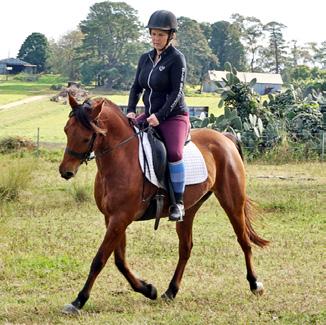
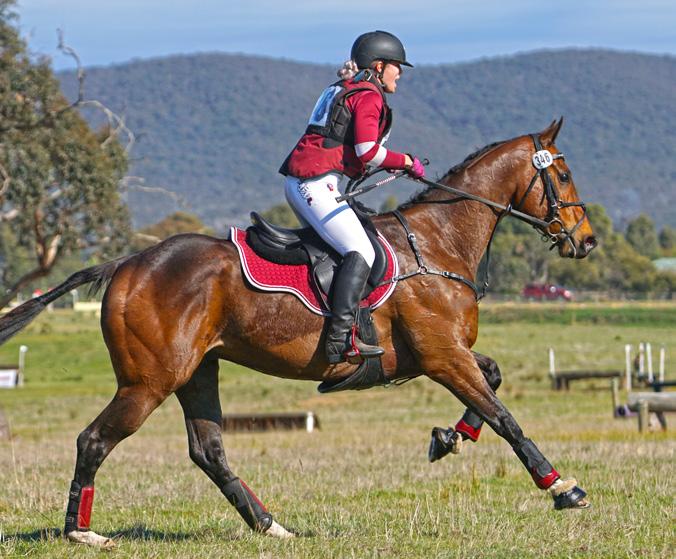
ABOVE: Nicole Marheine riding her Connemara x Arabian mare Triple A Comet during lockdown at home on Mangrove Mountain (Image by Ty Christiansen). ABOVE: Amelia Wallace and Emmooki Street during the 2020 Strathalbyn Hunt Club run at Castle Hill (Image by Nick Forster).
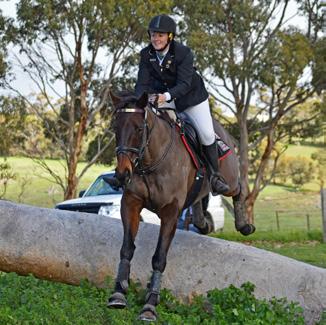
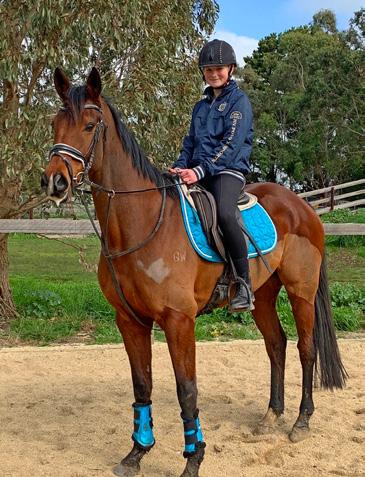
Get featured in Around The Traps!
If you have had a great photo taken of you and your equine partner while you've been out and about enjoying yourselves, submit your photo to info@horsevibes.com.au to be considered for a starring role in our next issue! If your image is selected it will be published in the print and digital magazines and on the HorseVibes website!
www.horsevibes.com.au
horsevibes @horsevibesmag
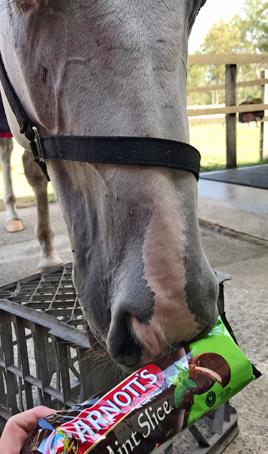
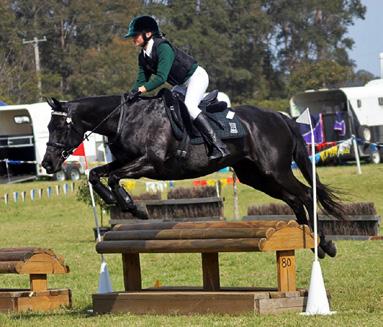
ABOVE: 12-year-old Eden Liddiard and Stoodleigh Kahlua representing Wollondilly Anglican College at the 2019 Berry Interschools Championships (Image by Melissa Willebrand). TOP LEFT: Sarah Young and her new OTT Zena at home in Darraweit Guim, Victoria (Image by Jodie Young). LEFT: Morning tea! When 5-year-old Warmblood gelding Ace heard owner Angela Arkadieff rustling a biscuit packet (Image by Angela Arkadieff).
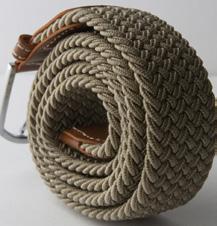

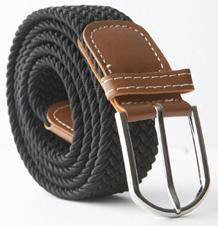
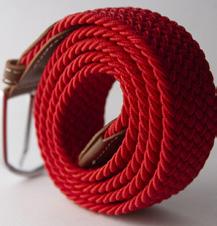
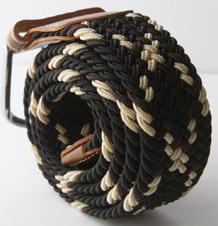
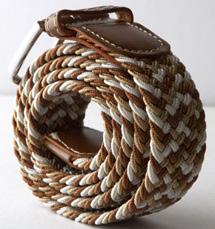
Woven stretch belt – 35 colours and patterns available $25 or $15 Gold and Platinum Members https://membership.equestrianhub.com.au Equestrian Hub Membership perks
